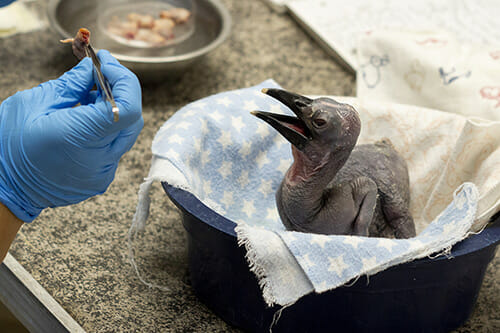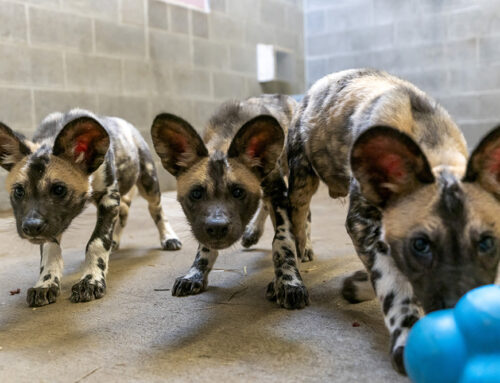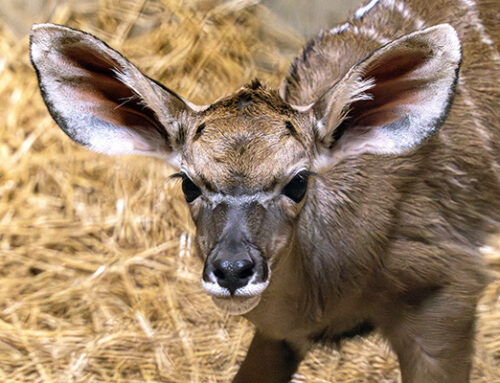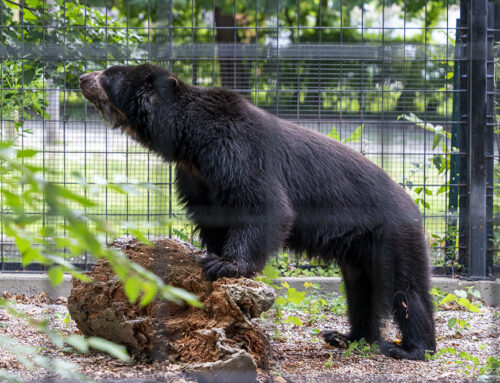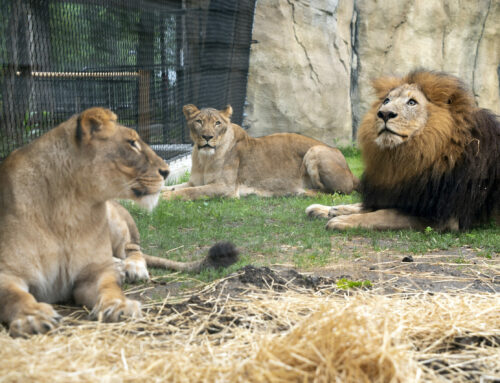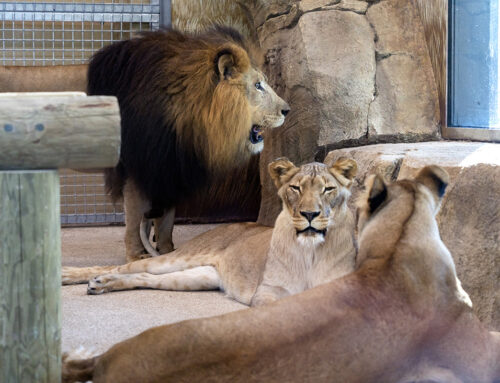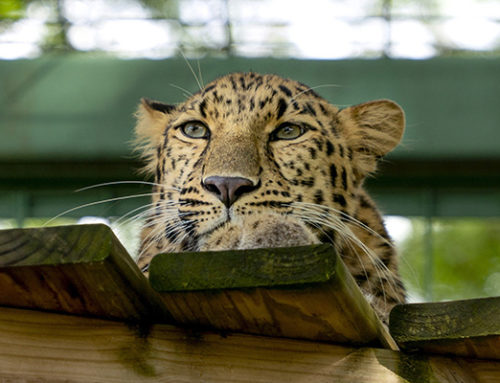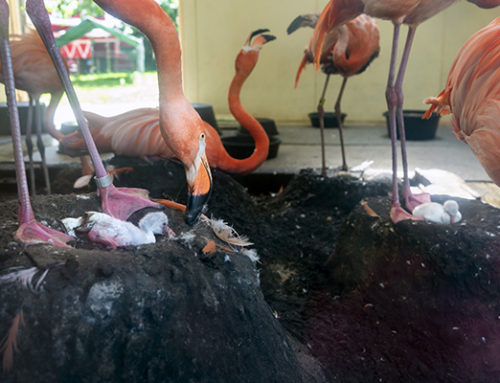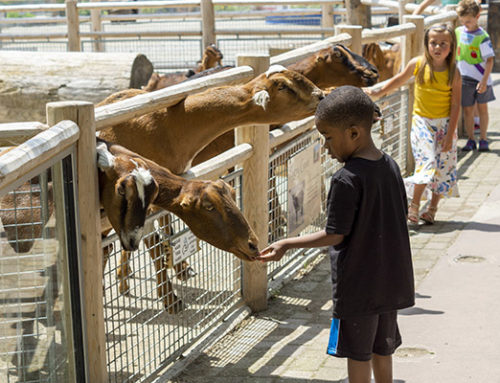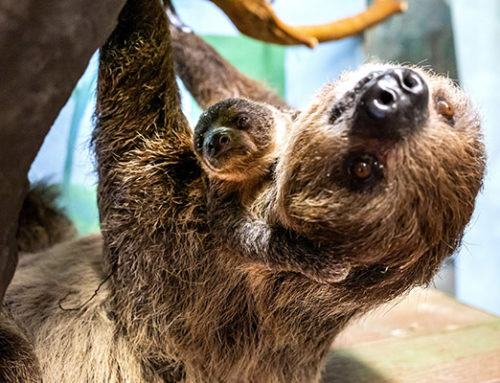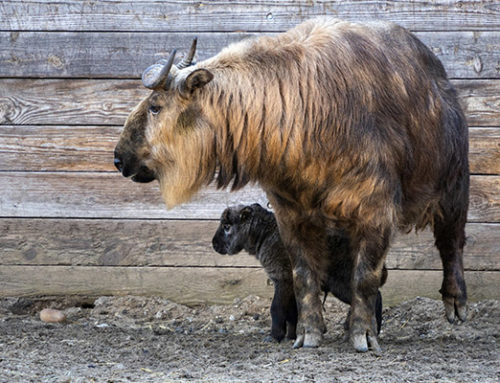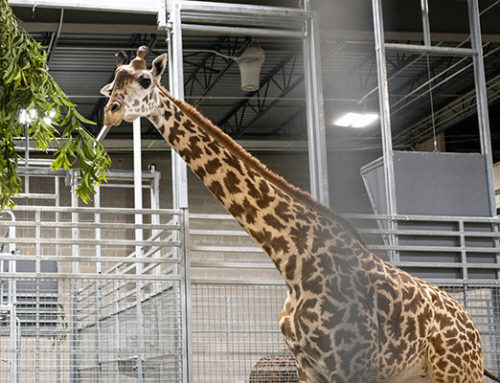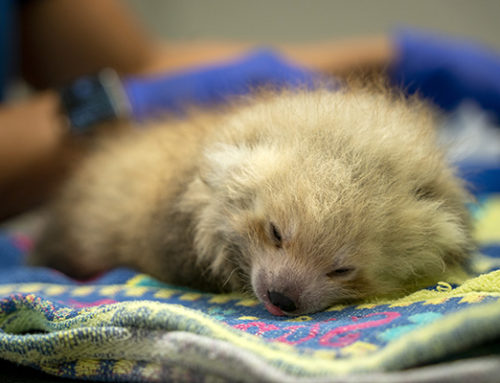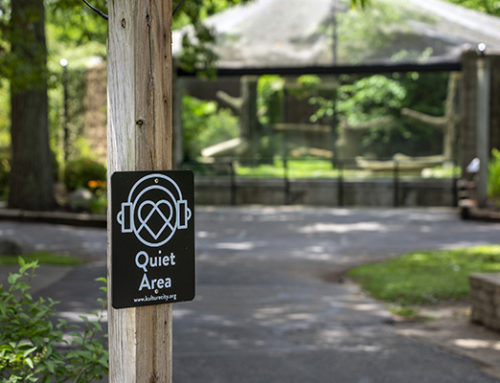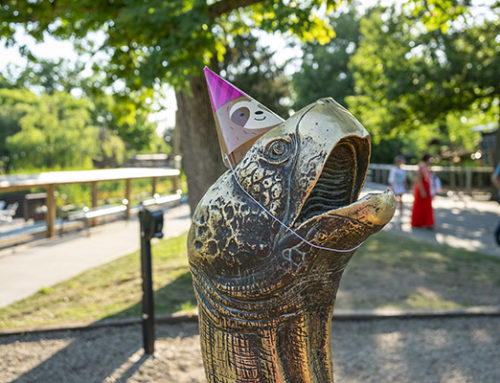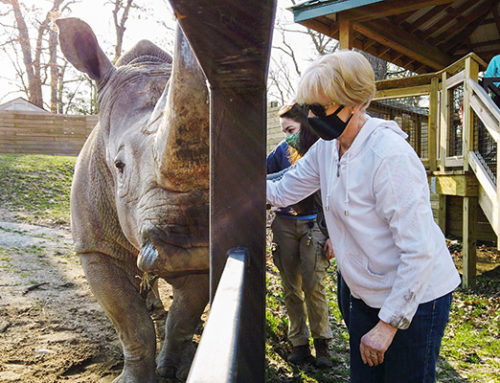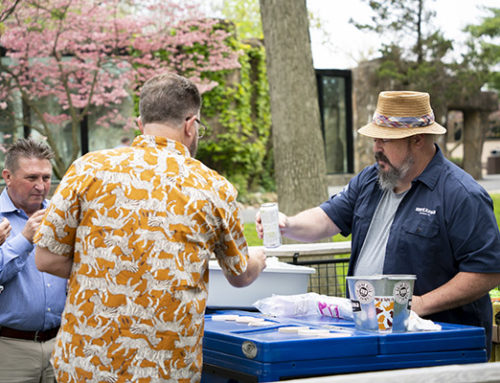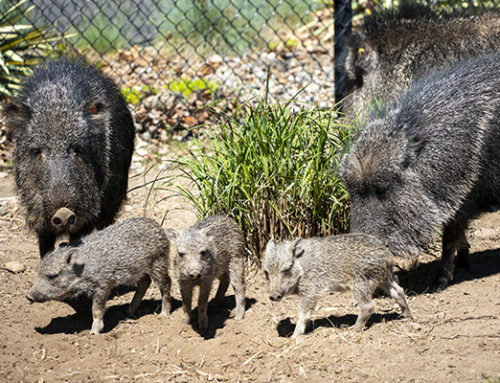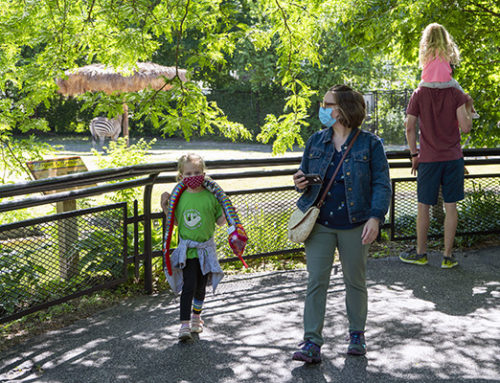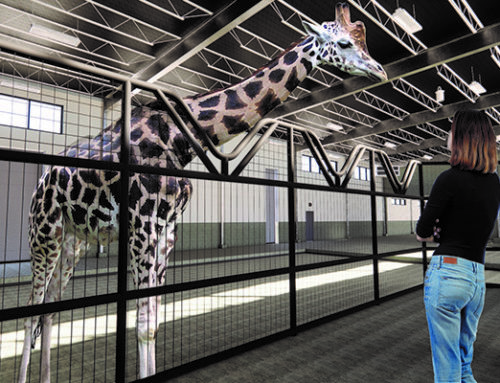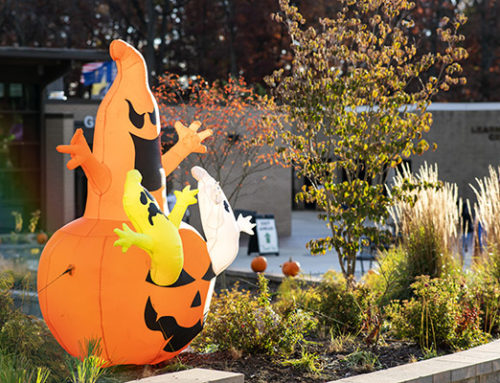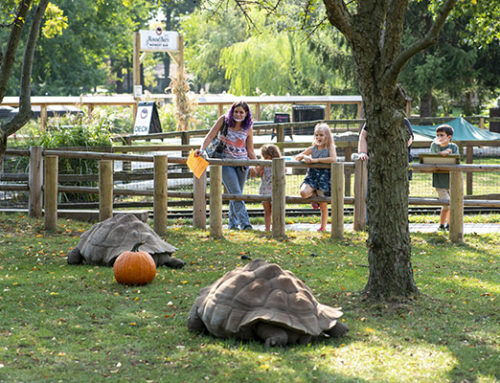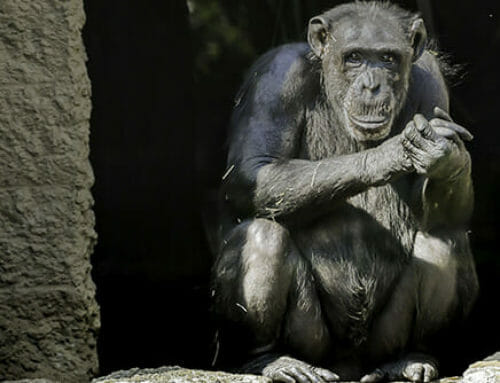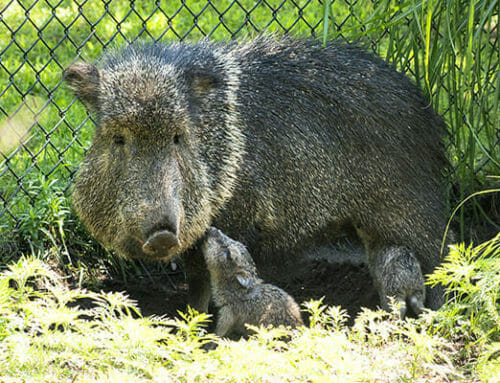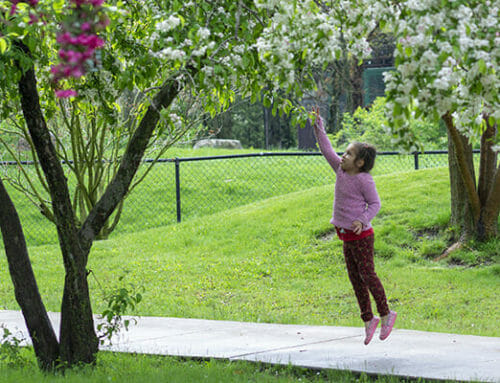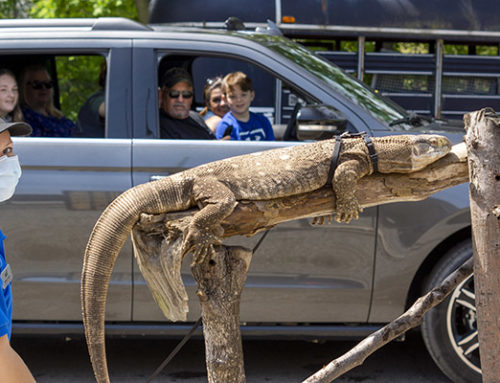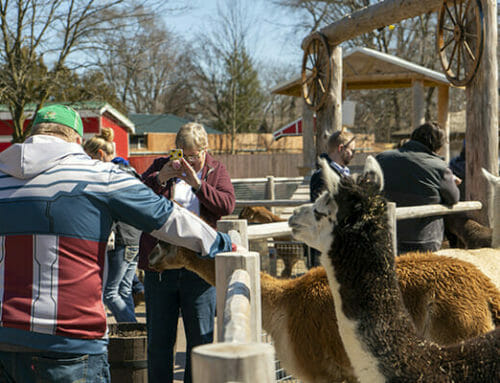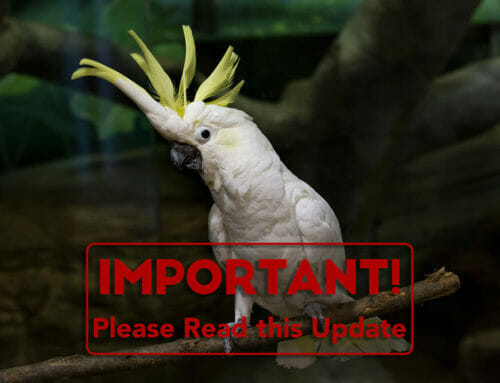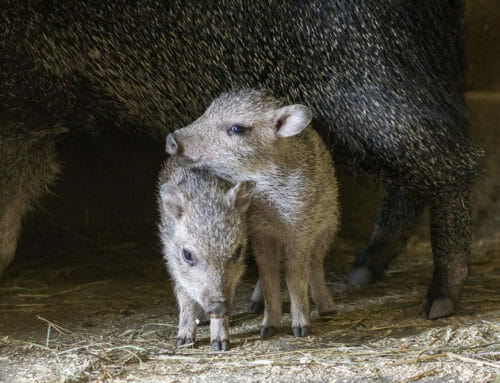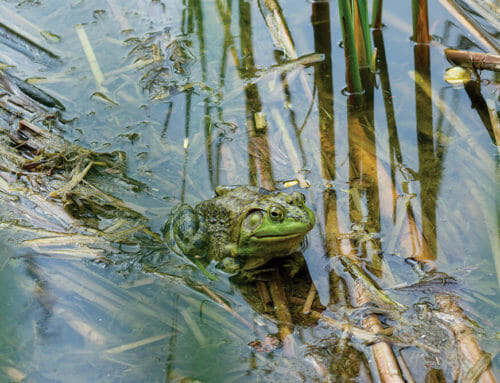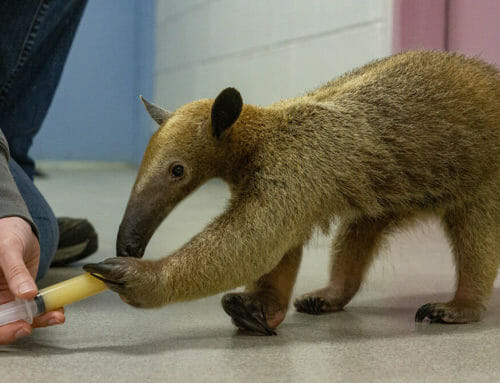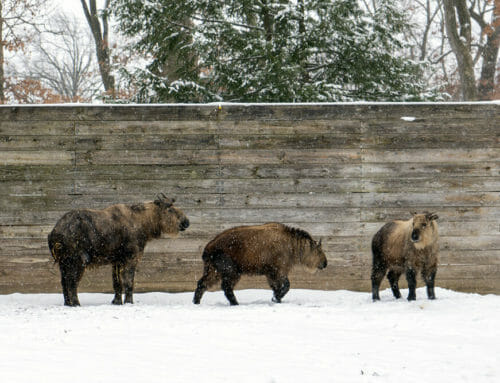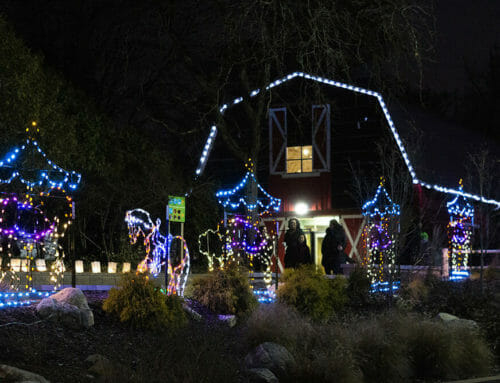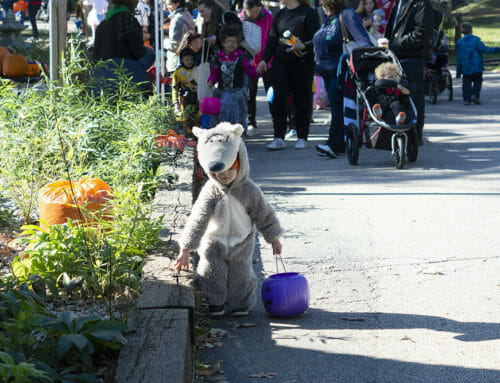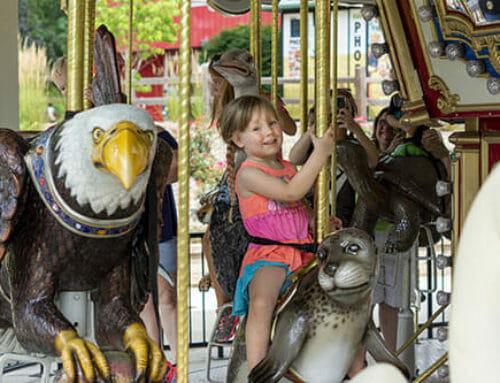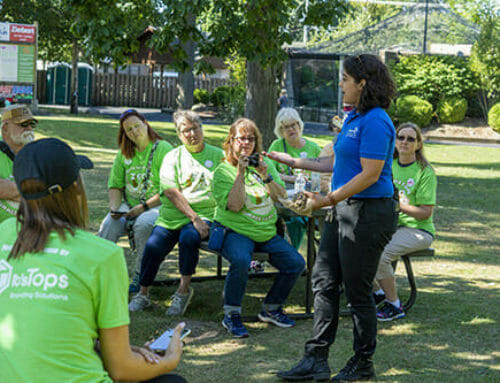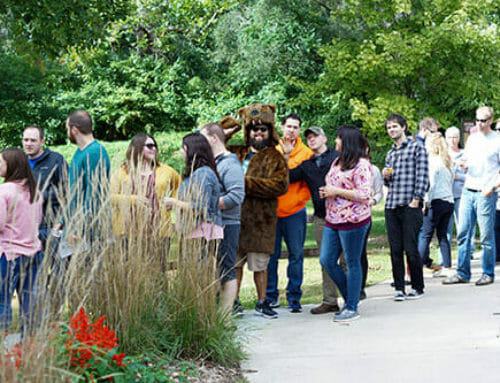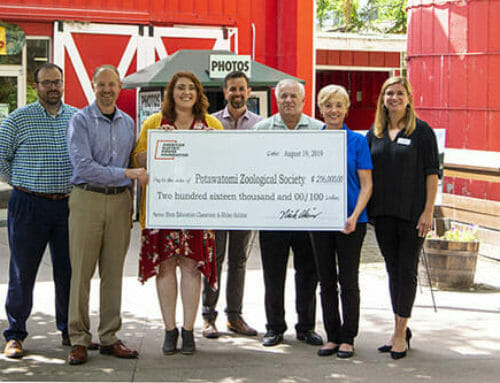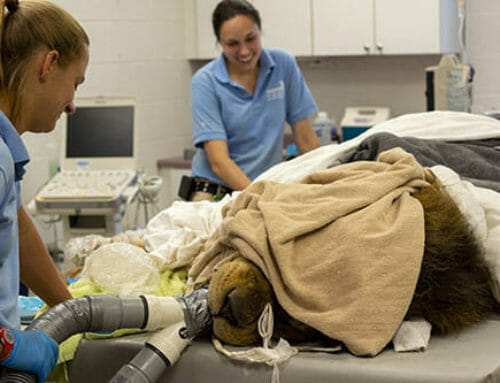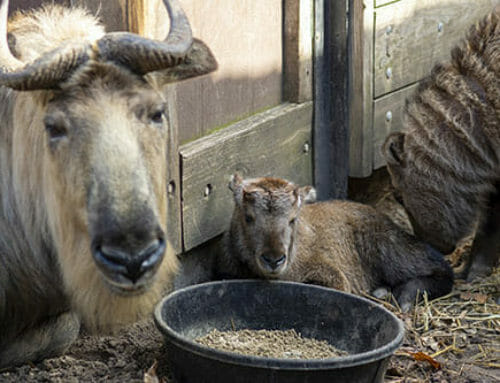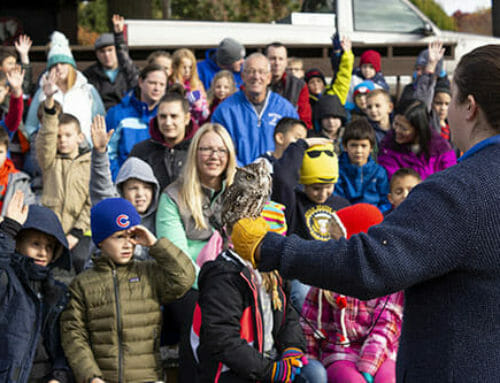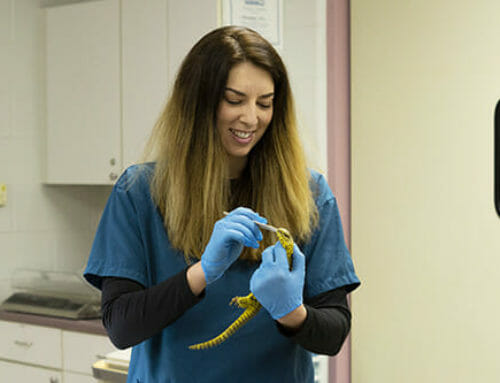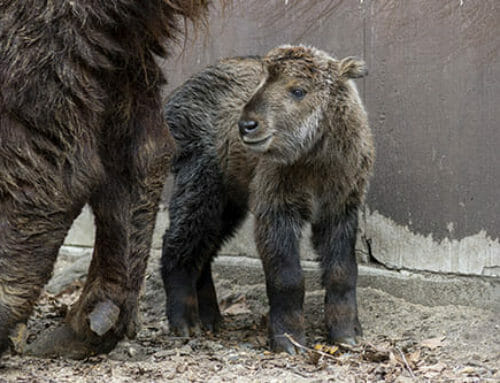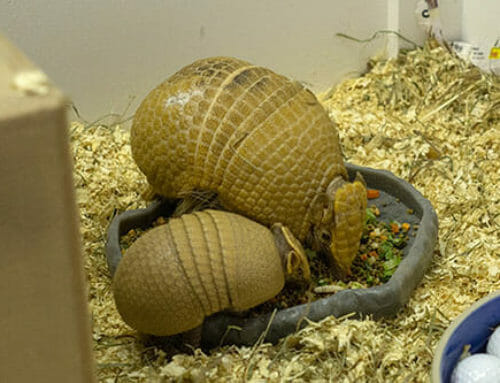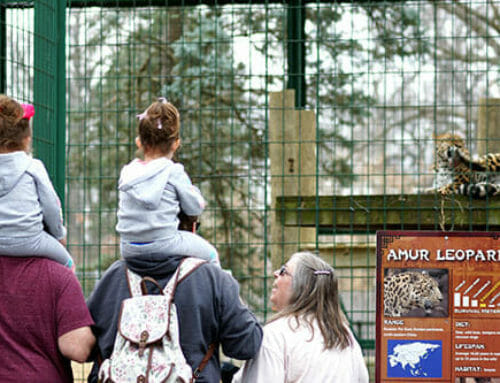The Potawatomi Zoo is proud to announce that a southern ground hornbill chick hatched behind the scenes on April 30, 2019, to parents Timmy and Jenny. This birth is part of a breeding recommendation by the Southern Ground Hornbill Species Survival Plan (SSP) program.
After the egg was laid, the animal care team moved it to the Zoo Hospital to incubate it and give it the best chance of survival. After hatching, the eggshell was sent to a lab for DNA testing to identify the sex of the chick, and it was determined to be a male.
“Southern ground hornbills are considered vulnerable in the wild, so hese important breeding programs within zoos are essential to the preservation of this species,” says Josh Sisk, interim executive director of the Potawatomi Zoo. “This is the sixth chick we’ve successfully reared here at the Potawatomi Zoo, and I’m so proud of my team’s hard work with this male.”
These large, foraging birds are largely carnivorous, and the chick is being fed a meat diet recommended by the SSP. The team of zookeepers who are raising the chick feed him at regular intervals during the day and use physical and vocal cues to help him recognize that his food comes from his own species. This step will help him integrate back into the flock when he’s old enough.
The primary reason for the decreasing numbers of southern ground hornbills in the wild is loss of habitat, especially deforestation. However, another reason is their complicated family structure and breeding process. Southern ground hornbills are obligate cooperative breeders, which means that a family unit of at least four is needed to raise each chick: a breeding pair and helpers. They nearly always raise just one chick at a time, and only two fully mature birds with experience as helpers breed within each group. In the wild, they often only successfully raise one chick every six to nine years. As their numbers dwindle, it becomes harder and harder for southern ground hornbills to successfully raise chicks to maturity.



